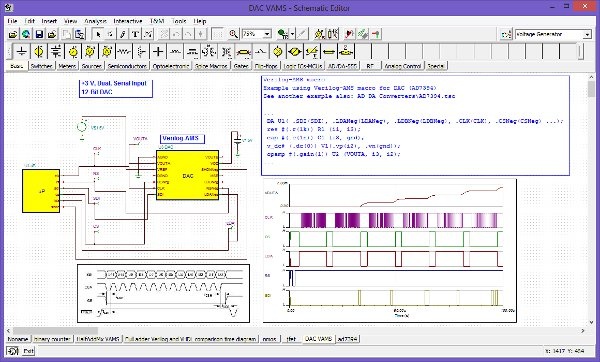Verilog is a Hardware discription language.
A hardware description language is a computer language that is used to describe hardware.
Currently, almost all integrated circuits are designed with using HDL. Two HDLs are widely used
1) Verilog HDL
2) VHDL (Very High Speed Integrated Circuit Hardware Description Language)
Schematic design entry can be replaced by writing HDL code that CAD tools understand.
CAD tools can verify the HDL codes, and create the circuits automatically from HDL codes.
We use Verilog, not VHDL for FPGA programming
-Verilog is more popular in industry than VHDL
-They offer similar features
History of Verilog
-In 1980s, originally developed by Gateway Design Automation.
-In 1990, was put in public domain.
-In 1995, adopted as an IEEE standard 1364-1995
-In 2001, an enhanced version, Verilog 2001
Functions of Verilog
-Design entry, like schematic
-Simulation and verification of your design
- Synthesis.
Synthesis.
 Synthesis.
Synthesis.Verilog Usage:
Verilog may be used to model circuits and behaviors at various levels of abstraction:
-Transistor/Switch Level Modeling. LOW LEVEL
-Gate Level Modeling.
-Data Flow Modeling.
-Behavioral or algorithmic Modeling. HIGH LEVEL
For design with FPGA devices, transistor and gate level modeling is not appropriate.
Register Transfer Level (RTL) is a combination of behavioral and dataflow Modeling.
A Simple Verilog Example:
module gate1 (a,b,c);
input a,b;
output c;
and (c,a,b);
endmodule


